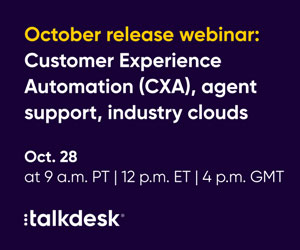When we talk about employees that are “engaged”, what we actually mean are those employees within your call centre that are motivated, enthusiastic about their company and excited about their future with that company. Essentially, if you are truly engaged at work it means being professionally happy. This is a huge trending topic in the call centre sector currently, and rightly so because of the nature of the work and the resulting impact on customer service.
A recent study suggests that just over 70% of employees are actively engaged. This means that the remaining 29% are either satisfied but not contributing, or contributing and not satisfied, or, worst of all actually, actively disengaged.
Some suggestions are that as many as 10% of employees display such a level of hostility that they are actively sabotaging the activities of their colleagues.
The drivers of employee engagement vary between men and women and depending on the age of the employee. It is easy to throw ideas around when talking about work/life balance. Some organisations have installed games rooms, healthy eating options in the canteen and so on. These are all valid options and increasingly becoming the norm. However, from a call centre point of view, is this merely paying lip service to the issue and ignoring the real challenges?
There are control factors that the organisation can put in place to impact workplace engagement. Thinking about Workforce Management, in the face of everyday pressures from things like managing shrinkage, controlling absenteeism, random unpredictable weather events, changing client demands and technological restraints, the focus is of course on the customer historically, but more and more there is a realisation that engaged employees are more likely to feel a sense of responsibility, urgency and ownership that positively impacts customer experience.
In order to get it right and meet and indeed exceed the expectations of the employee and the customer, it’s vital to come up with a creative approach to scheduling. More often than not, it’s the everyday dilemmas which pose the biggest problems. Every day, planners in the real world of call centres find themselves in positions where the demands of the business and fluidity of the available resources require creativity in order to successfully address the delicate balance of efficiency of the operation and the preferences of the employee. It’s the latter which has been voted the biggest challenge in call centre scheduling.
Introduce Incentivised Scheduling
Effective and creative scheduling can be used as a powerful incentive in the right hands.
For example, in a successful sales campaign, you can use gaps in scheduling as incentives where staff would be allowed to leave early if they’d gone above and beyond their sales targets. Nothing gets a good sales person firing on all cylinders like the opportunity to spend some hard earned bonus dollars on a few extra hours in the pub on a Friday afternoon.
In the planning world the priority is often on the busy periods and maximising resources at peak times. The troughs are less of a focus and can potentially become unavoidable resource black holes where ‘wait’ or ‘ready’ times can creep up. A keen-eyed analyst is able to highlight these and use them to their advantage, in this particular case as an effective reward for a job well done.
This flexible approach really helps to reinforce staff engagement with the planners and also goes a long way to dispelling the negative connotations of Orwellian control some Resource and Planning departments can become tarred with, especially when introducing the process and tools for the first time to an existing workforce.
There are of course many other ways that call centres can incentivise staff to accept some more flexibility in the shifts they are prepared to work. Some US-based organisations have introduced limits to pay increases and promotions to staff unless they are prepared to be flexible in the shifts they are willing to work.
A possibly better incentive could be to allow bidding to take place on different shifts. This can be successfully adapted so that the operation gives choices to agents in hours worked and agents then bid for pre-optimised shifts. This is a win-win-win scenario. The business wins, the customer wins and the employee wins, everyone’s happy. An extension to this idea is the use of shift swaps, clearly nothing new about this tactic no matter what industry, but some call centre organisations have a blanket ban on this because of the administrative headache it can cause. For example, how does it impact employee contracts, does it take into account skill proficiency levels, etc. However, this approach, if technically possible to automate effectively, can engage and create a sense of empowerment with the employee.
Introduce Availability Priority Levels
Another creative suggestion was to create different levels of schedule availability. Categorised in 3 ways, for example as High, Medium and low level. High level, where there is a significant family commitment, e.g. single parents who need to pick up sick children. An example of a low level commitment would much less life critical but maybe important for the individual and their work/life balance, e.g. some form of sporting commitment. If everything matches up, it would be classified as a nice to have. If this is communicated well it’s possible for employees to define for themselves what is high or low level availability.
This way, the guy who wants to go and play for his 5-a-side football team is perfectly cool with the single mother going before him, even though she also had the “good” shift, last week. This suggested approach is for long-term availability. In short-term availability, for example funerals, emergency dentist appointments, etc., it would be possibly the team leaders that take an ad-hoc decision, based on the impact of service on the day.
Introduce ‘Home Workers’
The use of home-based workers is increasing dramatically and can be a creative way of dealing with increasing demand and limitation on capacity. According to Ovum, the number of home-based contact centre agents in the UK will reach 160,000 by 2017, with a compound growth rate of 17.5% per year.
This approach is a great way of covering the M-curve, with increased flexibility in the scheduling approach, and home workers can take advantage of this more than most. Home-based workers find that split shifts are much easier to manage around their home life when the commute to the office is no longer required. It’s also been argued that by tapping into the home-worker market, organisations are able to recruit better calibre agents. Additionally, the advent of cloud-based technologies means that home-based virtual workers have the same access to the systems as site-based agents. There are now 3 clearly defined categories, fully virtual home workers, locally based home workers and hybrid home workers that can work in a split environment.
Scheduling is the heart of any effective workforce planning strategy, and more specifically optimised scheduling is the art of getting it right. As with any art form, there must be a creative spark in order for that process to achieve its desired outcome.
“Your clients are not the most important. Your staff are the most important. Take care of your staff and they will take care of your clients.” – Richard Branson.
Author: Guest Author
Published On: 9th Sep 2016 - Last modified: 27th Nov 2020
Read more about - Archived Content, Employee Engagement, Environment, Peopleware, Scheduling




























